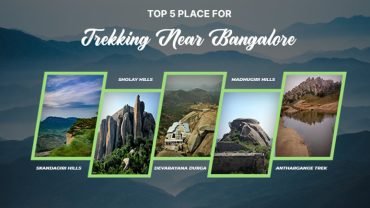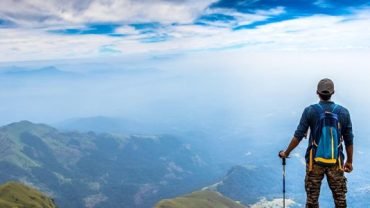Master the Art of Conducting Treks: A Comprehensive Guide for Adventure Enthusiasts
Trekking is more than just a physical activity; it’s an immersive experience that combines adventure, exploration, and connection with nature. For many, conducting a trek successfully involves careful planning, preparation, and execution. Whether you’re a seasoned trek leader or a budding adventure enthusiast looking to guide a group on their next adventure, mastering the art of conducting treks is essential for ensuring a safe, enjoyable, and memorable experience for all. In this comprehensive guide, we’ll delve into the key aspects of conducting treks, from Trek planning guide and preparation to leadership and safety. A solid Trek planning guide will help you organize the perfect adventure while prioritizing the well-being of your group.
1. Understanding Trekking Basics
Before diving into the nuances of conducting treks, it’s crucial to grasp the fundamentals of trekking. Trekking involves long walks or hikes across diverse terrains, ranging from mountains and forests to deserts and plains. Unlike casual hiking, trekking often involves multi-day expeditions with varying levels of difficulty and requires thorough planning and preparation.
Key Elements of Trekking:
- Terrain: Understanding the type of terrain you’ll be traversing (rocky, muddy, snowy, etc.) is vital for selecting appropriate gear and planning the route.
- Weather: Weather conditions can significantly impact a trek. Be prepared for sudden changes in weather and plan accordingly.
- Duration: Trekking expeditions can range from a few hours to several days. Plan the duration based on the trek’s difficulty and the experience level of participants.
2. Planning the Trek
Effective planning is the cornerstone of a successful trek. It involves several steps to ensure that all aspects of the trek are well-thought-out. A detailed Trek planning guide can help streamline this process and ensure nothing is overlooked.
a. Selecting the Destination
Choose a trekking destination that matches the skill level and interests of the participants. Consider factors such as:
- Difficulty Level: Match the trek’s difficulty with the fitness level and experience of the group.
- Season: Select a trek that is best suited to the current season and weather conditions.
- Cultural and Scenic Value: Consider destinations with rich cultural significance or breathtaking scenery to enhance the trekking experience.
b. Research and Reconnaissance
Conduct thorough research on the chosen trek:
- Route Information: Study maps and route descriptions. Check for trail conditions and any potential hazards.
- Permits and Regulations: Ensure that you have all necessary permits and are aware of local regulations.
- Local Resources: Identify nearby resources like medical facilities, local guides, and accommodation options.
c. Itinerary Planning
Create a detailed itinerary that includes:
- Daily Schedule: Outline daily activities, including start and end times, rest breaks, and meal times.
- Campsites and Accommodations: Plan where you will camp or stay each night.
- Emergency Plan: Develop a contingency plan for emergencies, including alternate routes and evacuation procedures.
3. Preparing the Group
Successful trekking requires preparation from both a logistical and a physical standpoint.
a. Training and Conditioning
Encourage participants to engage in physical conditioning before the trek. Recommended activities include:
- Cardiovascular Training: Activities such as running, cycling, and swimming to build stamina.
- Strength Training: Exercises focusing on core strength, leg muscles, and overall body endurance.
- Practice Treks: Shorter practice treks to acclimate participants to the demands of trekking.
b. Gear and Equipment
Ensure that all participants have the appropriate gear:
- Clothing: Dress in layers to adapt to changing weather conditions. Include moisture-wicking base layers, insulating layers, and waterproof outer layers.
- Footwear: Invest in well-fitting, durable trekking boots with good ankle support and traction.
- Backpacks: Choose a comfortable backpack with sufficient capacity for carrying essential gear.
- Sleeping Gear: If camping, ensure participants have suitable sleeping bags and mats.
c. Health and Safety
Address health and safety concerns:
- Medical Check-ups: Encourage participants to undergo health check-ups and ensure they are fit for trekking.
- First-Aid Kits: Carry a comprehensive first-aid kit with essentials for treating common injuries and ailments.
- Health Precautions: Advise participants on necessary vaccinations, medications, and precautions for specific regions.
4. Leading the Trek
As a trek leader, your role is crucial in ensuring the safety and enjoyment of the group. Here are key responsibilities:
a. Group Management
- Briefing: Provide a thorough briefing on the trek, including the itinerary, safety procedures, and expectations.
- Pacing: Set a comfortable pace for the group and make adjustments based on the group’s fitness levels and terrain.
- Motivation: Keep morale high and encourage participants through challenging sections.
Explore More: Himalayan trekking | kedarnath trek | Bandaje waterfalls | kodachadri trek
b. Navigation and Route Management
- Route Navigation: Use maps, GPS devices, and landmarks to navigate the route. Ensure you stay on the marked trail to avoid getting lost.
- Trail Maintenance: Be mindful of trail conditions and make adjustments to avoid hazards like loose rocks, steep inclines, or muddy patches.
c. Safety and Emergency Procedures
- Safety Checks: Regularly check on participants’ well-being, including hydration, energy levels, and any signs of altitude sickness.
- Emergency Protocols: Be prepared to handle emergencies such as injuries, severe weather, or lost individuals. Have a clear plan for evacuation and communication.
5. Enhancing the Experience
To make the trek more enjoyable and memorable, consider the following:
a. Environmental Awareness
- Leave No Trace: Follow the Leave No Trace principles to minimize your impact on the environment. Pack out all trash and avoid disturbing wildlife.
- Respect Local Culture: If trekking through culturally significant areas, be respectful of local traditions and practices.
b. Enriching Activities
- Local Experiences: Incorporate activities that allow participants to experience local culture, such as visiting villages or interacting with local communities.
- Nature Appreciation: Encourage participants to observe and appreciate the natural surroundings, including wildlife, flora, and geological features.
c. Documenting the Journey
- Photography: Capture moments and landscapes to create lasting memories of the trek.
- Journaling: Encourage participants to keep journals of their experiences and reflections.
6. Post-Trek Reflections
After the trek, take time to reflect on the experience:
a. Debriefing
- Feedback: Collect feedback from participants to understand their experiences and areas for improvement.
- Review: Assess the trek’s success, including logistical aspects, group dynamics, and overall satisfaction.
b. Celebrating Achievements
- Recognition: Acknowledge and celebrate the achievements of the group, including completing the trek and overcoming challenges.
- Sharing Stories: Share stories and photos from the trek to reminisce and celebrate the adventure.
Conclusion
Mastering the art of conducting treks requires a blend of thorough planning, effective leadership, and a deep appreciation for nature. By understanding the basics of trekking, preparing meticulously, leading confidently, and enhancing the experience for participants, you can ensure a successful and rewarding trek. A solid Trek planning guide will help you stay organized and prepared for any situation. Remember, the ultimate goal is to create unforgettable experiences and foster a love for adventure and exploration. So, embrace the challenge, follow your Trek planning guide, guide your group with expertise, and set out on a journey that will inspire and excite all who participate.




Comment (0)